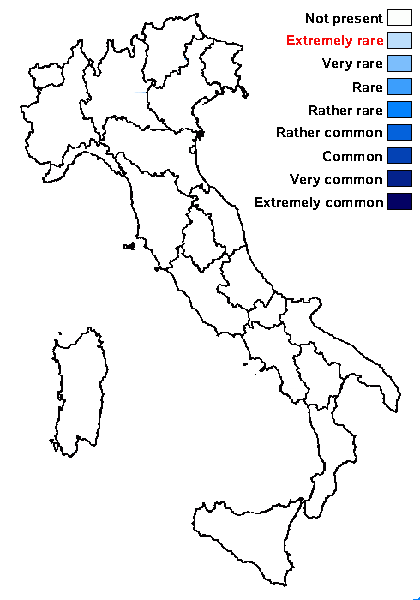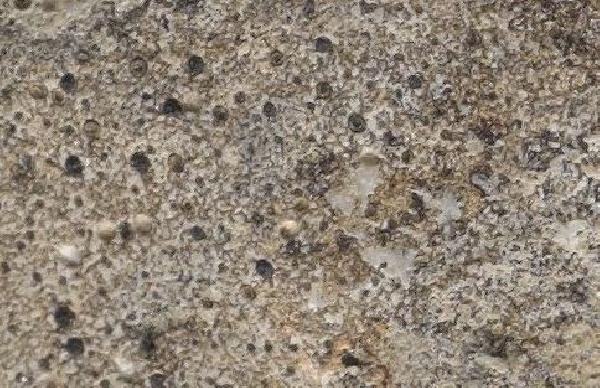Rinodina clauzadei H. Mayrhofer & Cl. Roux
in Mayrhofer, J. Hattori Bot. Lab., 55: 395, 1984
Synonyms:
Distribution:
Description: Thallus crustose, thinly episubstratic, continuous and film-like, dirty white, more or less farinose. Apothecia cryptolecanorine, up to 0.7 mm across, immersed in the thallus and separated by a small crack, with a black but usually whitish-pruinose, more or less flat disc and a thin proper margin. Epithecium dark brown or grey-brown, 20-30 μm high, with a finely granulose epipsamma, K-; hymenium colourless, 90-130 μm high, not inspersed with oil droplets; paraphyses mostly simple, c. 1.5 μm thick at mid-level, the apical cells 4-6 μm wide, with a dark cap; hypothecium colourless, up to 150 μm high. Asci 8-spored, clavate, the K/I+ blue tholus penetrated by a faintly amyloid apical cushion with parallel or diverging flanks, the wall K/I-, surrounded by a K/I+ blue outer layer, Lecanora-type. Ascospores 1-septate, pigmented, ellipsoid, 15-20 x 8.5-11 μm, Bicincta-type, with 2 dark bands over the cells, the ontogeny of type A (apical wall thickening after septum formation). Photobiont chlorococcoid. Spot tests: K-, C-, KC-, P-, UV-. Chemistry: without lichen substances.Note: a rare species growing on compact calcareous rocks near treeline, known from the Western Alps (France); to be looked for in the Italian Alps.
Growth form: Crustose
Substrata: rocks
Photobiont: green algae other than Trentepohlia
Reproductive strategy: mainly sexual

Predictive model

Modified from the original at: https://gzu.jacq.org/GZU000286610
GZU 000286610 - Leg. C. Roux - 1973-07-10
Location France / Provence-Alpes-Côte d'Azur
Label Frankreich, Dept. Hautes Alpes, Vars, Surface 45° SW de calcaire triasique trés compact, Début du vallon Langièr ; Alt. 2150 m
Habitat Surface 45° SW de calcaire triasique trés compact
Growth form: Crustose
Substrata: rocks
Photobiont: green algae other than Trentepohlia
Reproductive strategy: mainly sexual

Predictive model

 INDEX FUNGORUM
INDEX FUNGORUM
 GBIF
GBIF

